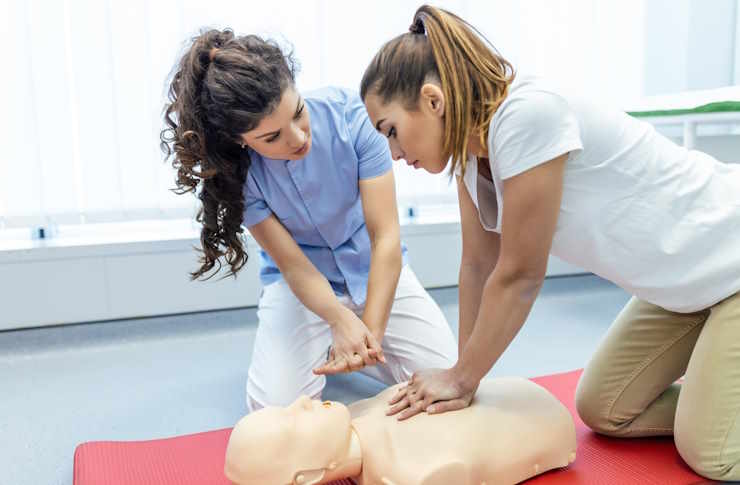Train as a Medical Assistant: Start Your Healthcare Career
Medical assistant training provides the clinical and administrative skills needed to begin a hands-on healthcare career. Explore certificate, associate degree, accelerated, and online options that teach patient care, EHR use, phlebotomy basics, and office procedures. Learn timelines, admission requirements, clinical practicum expectations, and career paths to pick a program that fits your schedule and goals.

Train as a Medical Assistant: Start Your Healthcare Career
A career as a medical assistant blends direct patient care with essential office responsibilities, making it a versatile and in-demand entry point into healthcare. Training programs focus on practical clinical skills, administrative systems, and professional behaviors so graduates can support physicians, nurses, and office teams in clinics, physician offices, urgent care centers, and outpatient facilities. As demand for efficient, patient-centered services grows, qualified medical assistants are increasingly valuable members of the care team.
Program lengths and formats
How long training takes depends on the credential and delivery method you choose. Certificate or diploma programs most often run 9 to 12 months full time and concentrate on the core clinical and administrative duties you will perform from day one on the job. Associate degree programs usually span about two years and include general education courses that broaden academic foundations and potential career options.
For those eager to enter the workforce faster, some vocational schools offer accelerated tracks that compress essential instruction and supervised practice into roughly six months. These intensive formats require a high level of commitment and typically mix classroom lessons with concentrated lab work. Online certificate programs are also an option; many take 12 to 18 months and allow students to complete theory coursework remotely while arranging in-person clinical practicums at approved local sites.
Admissions and prerequisite expectations
Most programs require a high school diploma or GED. Many programs recommend or mandate basic coursework in biology, chemistry, or math to prepare students for clinical topics. Because modern offices use electronic systems, basic computer literacy is important; many curricula include instruction in electronic health records and practice management software.
Health and safety checks are standard before clinical placements. Expect background screenings, drug testing, and documentation of immunizations and tuberculosis screening. Programs often require or strongly encourage CPR certification, and prior healthcare experience can strengthen an application and ease the transition into hands-on clinical rotations.
Where you can train
Community colleges and technical institutes are common providers, offering hands-on lab sessions, supervised clinical practice, and externships that place students in active healthcare environments. Vocational schools frequently focus on career-targeted certificates and may provide accelerated schedules for faster entry into employment.
Some hospitals and clinics provide on-the-job training, but many employers now prefer candidates who have completed an accredited academic program. Hybrid and fully online offerings continue to expand, combining virtual coursework with scheduled practical sessions at local clinical sites to help learners balance school, work, and family responsibilities.
Career roles and advancement
Entry-level medical assistants work in a variety of settings, such as physician offices, urgent care centers, outpatient hospital departments, specialty practices (pediatrics, cardiology, etc.), long-term care facilities, and community health clinics. Daily duties typically split between front-desk responsibilities—scheduling appointments, handling billing and insurance tasks, and maintaining records—and clinical activities like taking vital signs, preparing patients for exams, performing basic lab draws, and assisting providers with minor procedures.
With experience and additional training, medical assistants can specialize in areas such as ophthalmology, podiatry, or clinical lab assistance. Earning national credentials and completing continuing education can boost employment prospects and salary. Career progression may also lead to supervisory or administrative roles, such as medical office manager or clinical coordinator.
| Training Program | Provider | Typical Duration | Key Features |
|---|---|---|---|
| Medical Assistant Certificate | Community College | 9-12 months | Hands-on clinical labs, externship placement |
| Associate Degree in Medical Assisting | Technical Institute | 2 years | Broader academic coursework, expanded career options |
| Accelerated Medical Assistant Program | Vocational School | ~6 months | Intensive schedule, fast entry to workforce |
| Online Medical Assistant Certification | Accredited Online School | 12-18 months | Flexible pacing, remote coursework with clinical practicum |
Prices, rates, or cost estimates mentioned in this article are based on the latest available information but may change over time. Independent research is advised before making financial decisions.
Choosing the right program for you
Selecting the best pathway depends on your timeline, learning preferences, and long-term goals. If quick entry into the workforce is the priority, a certificate or accelerated program can be the fastest route. If you seek broader academic preparation and greater advancement opportunities, an associate degree may be a better investment.
When comparing programs, confirm accreditation, the length and quality of clinical practicum or externships, and employer connections that may help with job placement. Hands-on clinical experience is critical—employers favor graduates who pair classroom knowledge with demonstrated patient care skills, infection-control practice, and familiarity with electronic health records.
Medical assisting is a practical, people-centered occupation that offers variety, stability, and clear paths for growth. Whether your strengths are in patient interaction, organization, or both, structured training programs deliver the technical training and supervised practice needed to begin a rewarding healthcare career.
This article is for informational purposes only and should not be considered medical advice. Please consult a qualified healthcare professional for personalized guidance and treatment.






